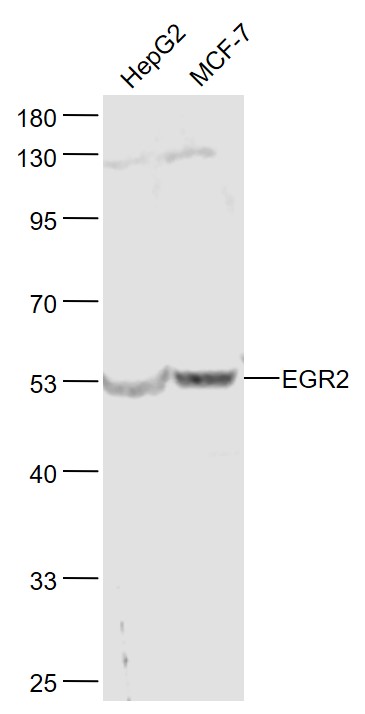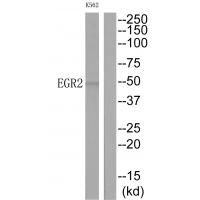EGR2 antibody
GTX102912
ApplicationsWestern Blot, ImmunoHistoChemistry, ImmunoHistoChemistry Frozen, ImmunoHistoChemistry Paraffin
Product group Antibodies
TargetEGR2
Overview
- SupplierGeneTex
- Product NameEGR2 antibody
- Delivery Days Customer9
- Application Supplier NoteWB: 1:500-1:3000. IHC-Fr: 1:100-1:1000. *Optimal dilutions/concentrations should be determined by the researcher.Not tested in other applications.
- ApplicationsWestern Blot, ImmunoHistoChemistry, ImmunoHistoChemistry Frozen, ImmunoHistoChemistry Paraffin
- CertificationResearch Use Only
- ClonalityPolyclonal
- Concentration1 mg/ml
- ConjugateUnconjugated
- Gene ID1959
- Target nameEGR2
- Target descriptionearly growth response 2
- Target synonymsAT591, CMT1D, CMT4E, KROX20, E3 SUMO-protein ligase EGR2, E3 SUMO-protein transferase ERG2, KROX-20, Drosophila, homolog (early growth response-2), early growth response protein 2, zinc finger protein Krox-20
- HostRabbit
- IsotypeIgG
- Protein IDP11161
- Protein NameE3 SUMO-protein ligase EGR2
- Scientific DescriptionThe protein encoded by this gene is a transcription factor with three tandem C2H2-type zinc fingers. Defects in this gene are associated with Charcot-Marie-Tooth disease type 1D (CMT1D), Charcot-Marie-Tooth disease type 4E (CMT4E), and with Dejerine-Sottas syndrome (DSS). Multiple transcript variants encoding two different isoforms have been found for this gene. [provided by RefSeq]
- Storage Instruction-20°C or -80°C,2°C to 8°C
- UNSPSC12352203
References
- Kuramoto M, Kawashima N, Tazawa K, et al. Mineral trioxide aggregate suppresses pro-inflammatory cytokine expression via the calcineurin/nuclear factor of activated T cells/early growth response 2 pathway in lipopolysaccharide-stimulated macrophages. Int Endod J. 2020,53(12):1653-1665. doi: 10.1111/iej.13386Read this paper








